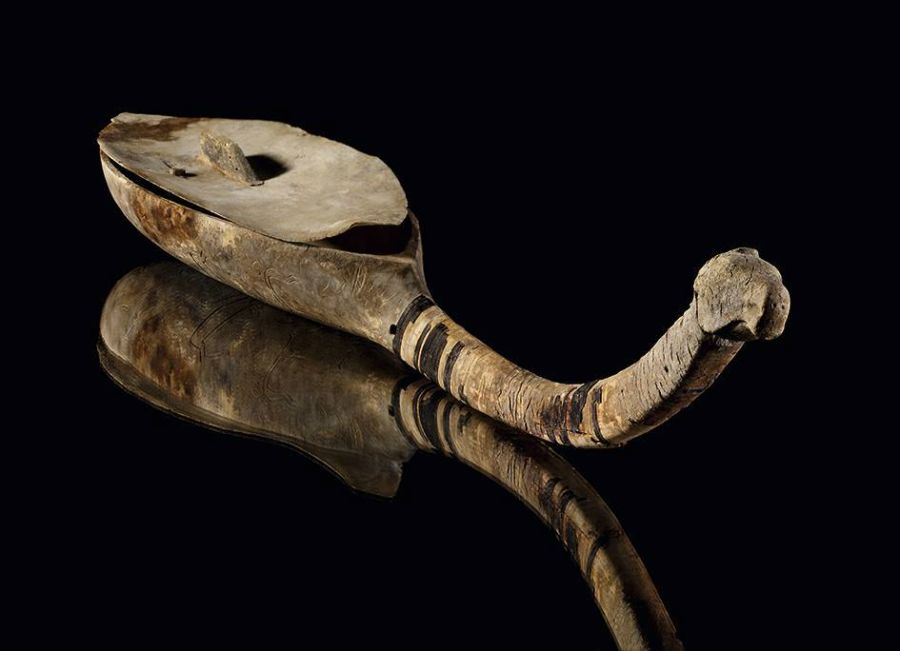Collection of the National Museum of Mongolia: Altai Harp
Art & Culture
Ulaanbaatar /MONTSAME/. In our series of highlight artifacts being kept at the National Museum of Mongolia, we are presenting the Altai harp. The artifact was discovered at a burial site during an excavation conducted by a team led by researchers of the Mongolian Academy of Sciences Ts.Turbat and D.Batsukh in Mankhan soum, Khovd aimag in 2008.
The burial was for a young warrior aged 20-25 from the Early Middle Ages. Of the various artifacts discovered inside, the most fascinating one was the wooden musical instrument. Wooden instruments are generally very rarely found from burials in Eurasia due to improper storage conditions.
Length: 72 cm
Width: 10.1 cm
The main body of the instrument is made with birch wood, while the rest are made of willow. With a long, slim neck, it is shaped like a boat. A horsehead is depicted at the top of the instrument.
A unique imagery is engraved the opposite of the soundboard. It depicts 6 deers, 1 mountain goat, and 5 dogs as well as a hunter looking to shoot his arrow, which in some ways look similar to cave paintings of the Turkic period. Scholars speculate that the imagery with the theme of hunting is due to how ancient nomads used to use music in worshipping the mountains and waters before embarking on a hunt.
Runiform inscriptions can also be found in 6 parts of the instrument. Professor Ts.Battulga deciphered the inscription, and discovered that the instrument was referred to as “Yaylig” in the ancient Turkic language which meant melodic. As for the warrior that owned the instrument, his name was “Chure”, and well-known as “Yay-Ogil” or the boy that makes melodies. As a result of the joint research conducted by instrument researchers and craftsmen, the original sound of the instrument was also discovered. Many musical pieces involving the instrument have been written by the ‘Altai’ folk music band so far.
 Ulaanbaatar
Ulaanbaatar














































































